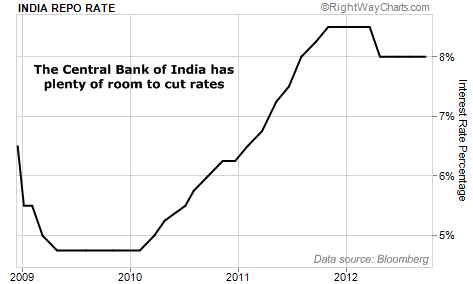 My friend Rahul is fired up again…
My friend Rahul is fired up again…
In late 2008, Rahul urged me to visit him in India to show me the extraordinary opportunities he was finding there.
Rahul and I traveled all over southern India, visiting smaller Indian companies he had invested in. The roads were slow and bumpy, and the country’s infrastructure was terrible.
But these Indian companies were incredible… They had amazing, efficient facilities, and extremely hard-working employees.
[ad#Google Adsense 336×280-IA]Long story short, the investment opportunities Rahul showed me on our trip were absolutely incredible.
You could hardly lose money buying these companies at these prices.
(And I don’t have that feeling very often.)
Soon after I got home, I invested my money with Rahul… I took my money out in early 2010 – for a net profit of over 100% in just over a year!
I tell you this story not to brag about my gains… but because I want you to know that the opportunity today could be even bigger than it was in 2008…
In the last two years, large Indian stocks – as measured by the WisdomTree India Earnings Fund (EPI) – have fallen 41% from peak to trough, and they’ve bounced along those lows all year. During that same period, U.S. stocks are up about 17%.
They’re trading at a price-to-earnings ratio of just 11.6. This is nearly as cheap as you will find stocks anywhere on the planet… and it’s a 14% discount to the U.S. stock market.
It feels a lot like 2008, when I made a triple-digit return in a little over a year. With stocks so cheap, I gave Rahul a call to find out his thoughts about where we stand today…
“This is not like 2008,” he told me right away. “The opportunity is much better than 2008. The opportunity today reminds me of what was going on in 2002 in India.”
Wow. That’s a big statement. You see, over the five-year span from December 31, 2002 to December 31, 2007, large-cap Indian stocks rose 658%.
“In 2002, we started the cycle of declining interest rates, and there was an ‘up’ cycle in earnings,” Rahul told me.
In emerging markets, massive stock market booms often start from the government cutting interest rates. These lower interest rates can often cause a dramatic increase in earnings:
“Then over the course of 2002 to 2005, we had a phenomenal increase in earnings, and a re-rating higher of valuations. I think we’ll see something like that again – starting right now.”
A “virtuous” cycle kicked in for India. Higher earnings created higher expectations, driving stocks to stratospheric heights. I can see how this is possible again… Unlike the U.S., which has zero-percent interest rates, India’s central bank has kept rates at 8% or higher all year. Take a look…

With such high interest rates (relative to the rest of the world), India’s economy is growing at its slowest rate in a decade (5.3%). India’s politicians want the central bank to cut interest rates to stimulate economic growth. But the central bank wants to keep inflation in check, so it’s not listening.
“The Indian stock market has been a victim of poor sentiment that has been exacerbated by the government,” Rahul explained. “But that pall is lifting right now.”
Sometime soon, the central bank will start cutting interest rates. And that will help the economy and kick off those earnings increases like we saw from 2002 to 2005.
This is EXACTLY when we want to buy…
Indian stocks are dirt-cheap… they’re hated (“a victim of poor sentiment” today)… and now, we have an inkling of an uptrend in the WisdomTree India Earnings Fund (EPI).
We have all three things we look for in an investment. This is the real thing, my friends… It is a huge opportunity.
Like I said before, Indian stocks are cheap – down 41% peak to trough in the last two years – and India will eventually start cutting interest rates. That could kick off a stock-market cycle like India saw at the end of 2002. That cycle lasted for five years… and returned 658% from December 31, 2002 to December 31, 2007.
Heck, even if it only delivered half those returns, we’d still be looking at 329% in five years.
It’s time to buy India.
Good investing,
Steve
[ad#stansberry-ps]
Source: DailyWealth
